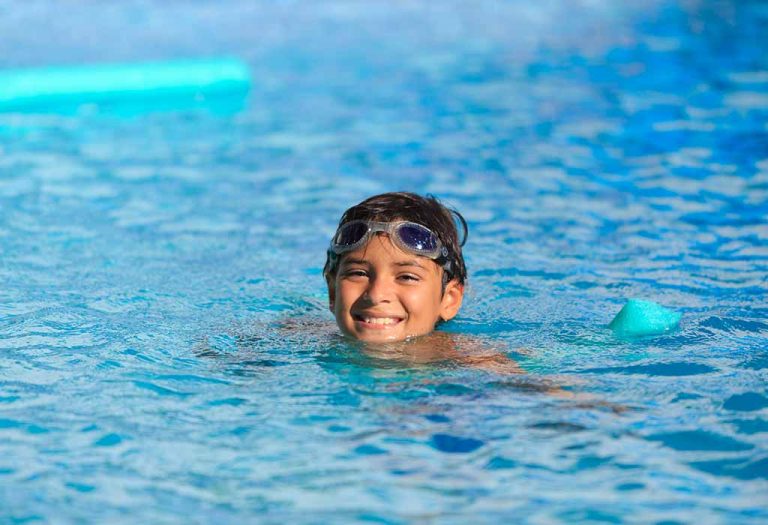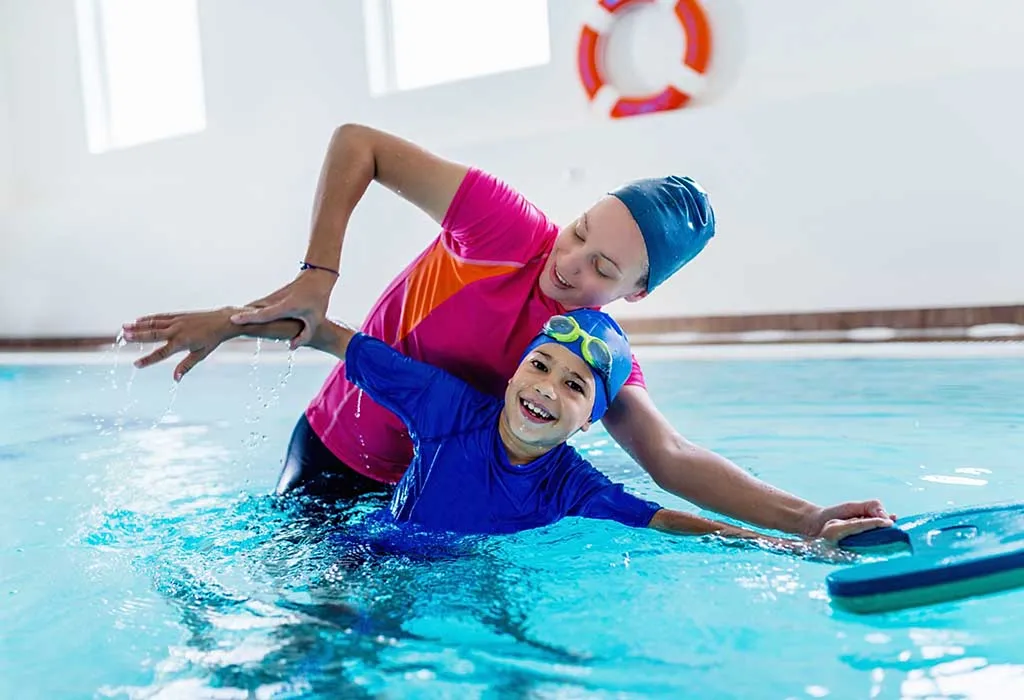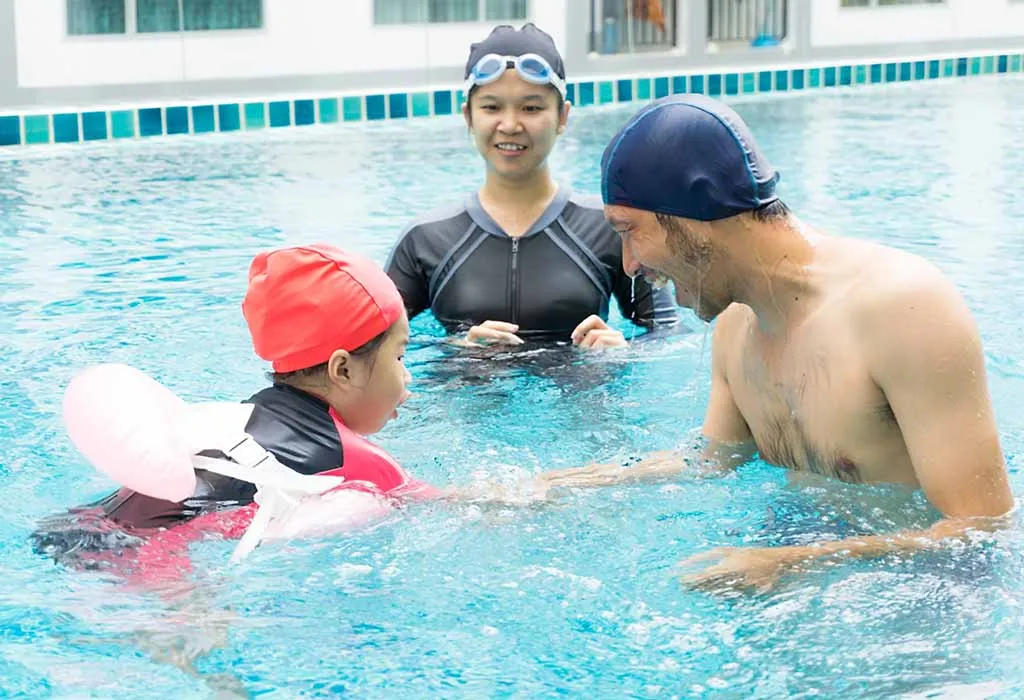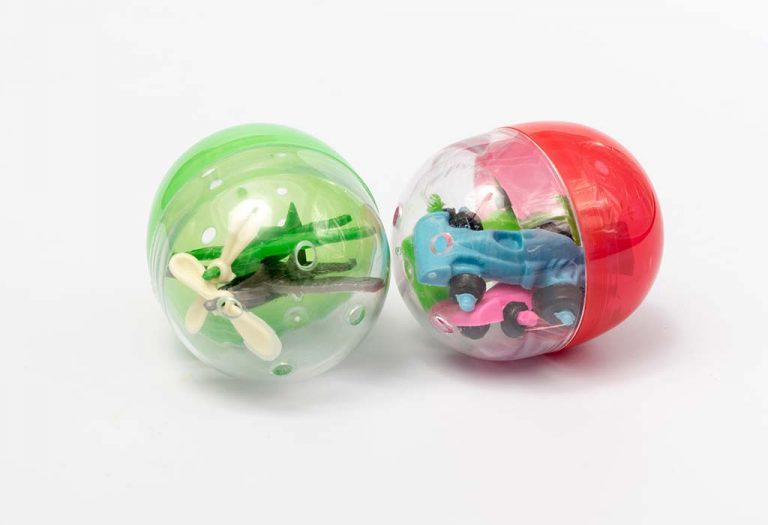How to Teach Kids to Swim – A Step-By-Step Guide
Swimming is a fun activity and also an important life skill that can come in handy. Besides being a great outdoor sport, it has plenty of benefits for children, including improving physical fitness, boosting confidence, and enhancing coordination. Learning how to teach kids to swim properly ensures they develop water safety awareness while enjoying the activity. Get to know the advantages, risks, and precautions related to swimming to make an informed decision on when and how to introduce your child to this cool activity. Starting with basic water familiarization and gradually progressing to strokes can make the learning process enjoyable and stress-free. Always supervise children closely and consider professional lessons to build their skills safely.
When Is the Right Time to Teach a Child to Swim?
The right time to teach a child to swim depends on their comfort level and development, but many experts recommend introducing water play as early as 6–12 months, with formal lessons starting around age 4–5 when kids have better coordination and can follow instructions (1). Learning how to teach kids to swim involves gradual steps—first building water familiarity, then teaching breath control, floating, and basic strokes—while ensuring a fun and safe environment. Early exposure helps develop confidence and safety skills, but the key is to proceed at the child’s pace, using patience and encouragement to foster a lifelong love of swimming.
Benefits of Swimming for Your Child
A great way to cool off during summer, swimming is also the only sport that might be able to save your child’s life. Besides this, here are some other benefits that swimming has to offer (2):
1. Good for Physical Health
It is a great way of getting kids some physical exercise in an era of electronic gadgets. Playing in the water is always appealing to children and swimming combines fun and learning. It also improves cardiac and respiratory health besides increasing stamina and enhancing balance and posture.
2. Essential for Safety
Drowning is known to be the second common cause of death in children aged under 14 (3). Knowing how to stay safe if one falls into the water accidentally is essential. Since swimming is a skill that stays with your child all life long, it is definitely a worthy pursuit.
3. Enhance Emotional Well-Being
Swimming is also beneficial to your child’s mental and emotional health. The natural buoyancy of water has been found to ease stress and improve an individual’s mood. It can help combat depression when pursued on a regular basis.
4. Teaches Teamwork
Besides helping your child make new friends, it even fosters team spirit without compromising on individuality. Learning together and competing against one another in a sportive manner teaches a child valuable life lessons.
5. Better Coordination
There has to be a good deal of synchronised movement of the arms, legs, and entire body not to mention the breathing pattern. Mastering this will also give your child a boost of self-confidence.
6. Builds Discipline & Goal-Setting Habits
Progressing through swim strokes and techniques teaches kids perseverance. Setting and achieving goals (like earning a new badge or beating a personal best) fosters a strong work ethic and resilience.
7. Boosts Cognitive Function
The combination of rhythmic breathing, bilateral movements, and mental focus in swimming has been linked to improved memory, problem-solving skills, and academic performance in children.
8. Encourages Better Sleep Patterns
The physical exertion of swimming helps children expend energy in a healthy way, leading to deeper and more restful sleep. Regular swimming can regulate sleep cycles, making it easier for kids to fall asleep and stay asleep through the night.
9. Supports Healthy Weight Management
As a high-calorie-burning activity, swimming helps maintain a healthy weight by boosting metabolism and building lean muscle. It’s an enjoyable way for kids to stay active, reducing the risk of childhood obesity without feeling like a chore.
10. Builds Resilience & Confidence
Overcoming the initial fear of water and mastering new swim skills gives children a sense of accomplishment. This builds self-esteem and teaches them that persistence leads to success—a mindset that translates to other areas of life.
Cons of Swimming for Children
Most of the time, you get to hear about the pros of swimming, and it is easy to believe there are no cons to this activity. However, every coin has two sides. There are some things you need to watch out for when getting your child to learn swimming.
- Summers are ideal for swimming, but if you live in a region where the weather is mostly cool, the cold water in the pool can lead to cold and cough in your child. Heated pools might be a solution, but are not easily accessible.
- Chemicals used to cleanse the pool, like chlorine, produces toxic gases, which when breathed in can lead to asthma in some.
- A swimming pool is also a transmitter of contagious diseases since a good number of children can be found in one at the same time.
Ways to Prepare a Child for Swimming
Help your child feel excited and confident about swimming with these simple preparation tips (4):
1. Help Them Overcome Fear Gently
Start by showing your child that water is fun and safe. Sit together at the edge of the pool and splash water playfully. If they see you enjoying the water calmly, they’ll feel more secure. Never force them – let them dip their toes first, then gradually go deeper as they feel ready. Praise every small step they take!
2. Begin in Shallow, Safe Areas
Always start where your child can stand comfortably – either in a baby pool, at the pool steps, or in shallow beach water. Let them walk around, splash, and play with water toys while getting used to the feeling. This builds confidence before moving to deeper areas where they can’t touch the bottom.
3. Prepare for the Water Temperature
The sudden cold feeling can scare kids. First, sit by the pool together and dip your feet in. Then pour small amounts of water over their arms and legs using a cup or toy watering can. Once they’re used to it, help them slowly enter the pool while holding your hand.
4. Turn Bath Time into Practice Time
Use your regular bath time to make water fun! Give them cups to pour water, toys that float, or even special bath crayons. Teach them to blow bubbles in the water (this helps with future swimming breathing). Sing bath songs while gently pouring water over their head to get used to the feeling.
5. Encourage Water Exploration
Provide fun tools like goggles, dive sticks, or floating toys. Let them discover how things move in water – what floats, what sinks. When they put their face underwater with goggles, they’ll be amazed at what they can see! This natural curiosity helps overcome fear.
6. Make Choosing Swim Gear Special
Take them shopping for their own swimsuit, arm floats, or a fun swim bag. Let them pick their favorite color or character design. At home, have them try it on and practice wearing it – this builds excitement for swimming days.
7. Family Swim Time Before Lessons
Before formal lessons begin, visit the pool with the whole family. Play simple games like “who can make the biggest splash” or “pass the beach ball.” When kids see parents and siblings having fun, they’ll want to join in too! Keep these first visits short and happy.
8. Learning Through Playful Games
- “Treasure Hunt”: Toss coins or sinkable toys in shallow water for them to retrieve
- “Motorboat”: Hold them under their arms and “zoom” through the water
- “Float Like a Starfish”: Help them lie on their back with support
- “Bubble Blowing Contest”: See who can make the most bubbles underwater
9. Use Songs & Rhymes as Teaching Tools
Music makes everything more fun! Try:
- “If You’re Happy and You Know It” (with splashing actions)
- “Ring Around the Rosie” (holding hands and walking in a circle in shallow water)
- “Five Little Ducks” (while practicing kicking motions)
How to Teach Your Child to Swim?
Wondering how to teach a child to swim step-by-step? There is no single method of teaching swimming to children. The approach to be used will differ depending on the individual temperament of the child. Here is how you can try teaching a child to swim in steps and according to age groups (5):
1. 1- to 2-year-olds
For toddlers aged 1-2 years, the focus should be on water familiarization rather than formal swimming instruction. At this stage, simply helping them feel comfortable in the aquatic environment is most important. Engage them in playful activities like gentle splashing, water games, and singing familiar songs while you’re in the pool together. This shared experience helps build their confidence while keeping them safe. Begin teaching basic water safety by demonstrating proper ways to enter and exit the pool, always maintaining physical contact and supervision. The goal is to create positive early experiences with water through fun, interactive play.
2. 2- to 3-year-old
At age two, children can begin developing basic water skills like kicking and gentle paddling motions. Parents can support the child horizontally in the water while encouraging strong leg kicks in both forward and backward directions. With adult assistance, toddlers can practice brief floating positions on both their tummy and back. Since many young children dislike water on their face, introducing bubble-blowing exercises helps them learn breath control. To develop arm movements, place floating toys just out of reach to motivate them to paddle toward the objects. Always provide full physical support during these early water experiences.
3. 4- to 5-year-old
By age four, most children reach an important developmental stage where they can better understand and remember instructions, making this an ideal time to start structured swim lessons. When choosing a program, look for these key features: qualified instructors, a clear skill progression system, and the option to observe initial classes to evaluate both teaching methods and safety protocols.
During lessons, four-year-olds typically learn to:
- Move from standing to basic swim positions
- Submerge their face briefly
- Master foundational skills like gliding, floating, and swimming to the edge
- Develop better coordination between arms and legs
4. 6-year-old and up
At six years old, children develop greater stamina, making this an excellent time to introduce more advanced swimming skills. They’re typically ready to learn the front crawl stroke and can practice holding their breath underwater for extended periods. This age group can begin mastering different swimming styles, including freestyle, breaststroke, backstroke, and butterfly.
Additional water skills become achievable too, like:
- Retrieving objects from the pool bottom
- Jumping into the water safely
- Exiting the pool without assistance
- Constant supervision is required even when your child is comfortable swimming as it takes only a second for things to go wrong.
Precautions to Be Taken When Your Child Goes Swimming
As far as children are concerned, you can never have too many precautions or safety measures in place. And swimming is no exception. While going swimming, ensure that your child (6):
- Never goes into the pool alone. Adult supervision is necessary at all times.
- Adheres to the rules at all times.
- Has donned the right type of swimming gear. Swimwear, goggles, earplugs are just some examples.
- Knows that swimming in a pool is extremely different from swimming in an ocean or a river. The river bed will not be flat and smooth like the pool and poses the danger of jutting rocks that can be sharp.
Selecting a Swimming Class for Your Child
It is important to be careful when choosing a swimming class for your child. If an instructor is not able to establish a rapport with your child and could not earn his trust, the road ahead will be extremely difficult. Keep the following in mind while looking for a swimming class for your child:
- Ensure that the classes are held according to the skills your child has to learn. Otherwise, your child might end up learning nothing significant.
- If you have a young child with a fear of water, check to see if they allow a parent to be in the pool during the class.
- Find out about how frequently the pool is cleaned and the kind of chemicals used to clean it.
- Check out the experience and the qualifications of all instructors who will be teaching your child.
- Choose a class with a limited number of children as only then will your child get the required individual attention from the instructor.
- See if you can first sit on a couple of the instructor’s classes or get a couple of trial classes to assess how the instructor manages the sessions.
FAQs
1. How can I teach a child who has a severe phobia of water?
Start with non-pool exposure, like playing with water in a bathtub or using a small inflatable pool. Gradually introduce sensory experiences, such as pouring water over their hands or using a spray bottle. Never force them—build trust through patience, positive reinforcement, and games. Consider professional help if the fear persists.
2. Is it safe to teach a child to swim in open water (lakes, oceans) before a pool?
Open water introduces unpredictable elements (currents, waves, visibility), making it riskier for beginners. A controlled pool environment is safer for initial lessons. If open water is the only option, ensure shallow, calm conditions, use a flotation device, and stay within arm’s reach at all times.
3. Why does my child forget swimming skills after a long break?
Like any skill, swimming requires consistent practice. Long breaks (especially over winter) can lead to regression. Reintroduce skills gradually through games and short refresher sessions. Muscle memory will return faster than initial learning.
It is quite evident that the pros of swimming outweigh the cons by far. By undertaking adequate safety precautions and opting for a reputed swim school, you will be able to help your child master this essential life-saving skill with ease. Introducing your child to swimming early on can make a significant difference in his attitude towards the sport and hopefully make him a fervent follower.
References/Resources:
1. American Academy of Pediatrics – Swim Lessons: When to Start & What Parents Should Know
2. Better Health Channel – Swimming – health benefits
3. Red Cross – Swimming and Water Safety
4. Swimming.org – Preparing kids for swimming lessons
5. ResearchGate – Teaching children to swim through action games in early childhood education
6. American Red Cross – Swimming Safety
Disclaimer: This information is just a guide and not a substitute for medical advice from a qualified professional.
Also Read:
Water Park for Kids
Drowning in Children
Swimming Pool Games for Kids
Was This Article Helpful?
Parenting is a huge responsibility, for you as a caregiver, but also for us as a parenting content platform. We understand that and take our responsibility of creating credible content seriously. FirstCry Parenting articles are written and published only after extensive research using factually sound references to deliver quality content that is accurate, validated by experts, and completely reliable. To understand how we go about creating content that is credible, read our editorial policy here.
























